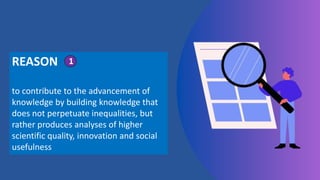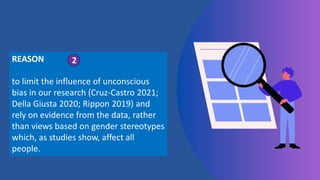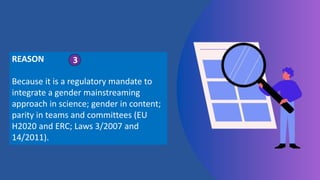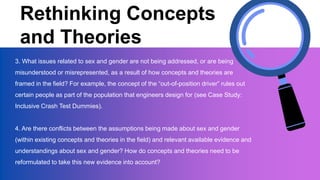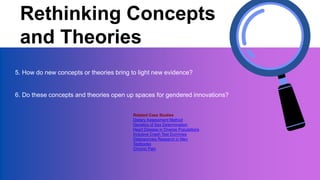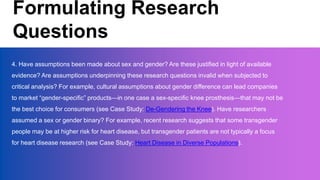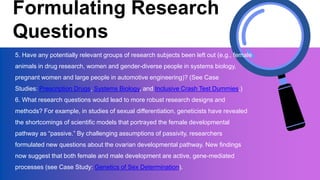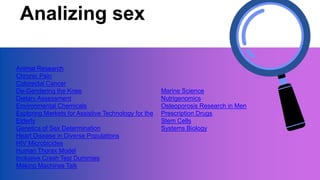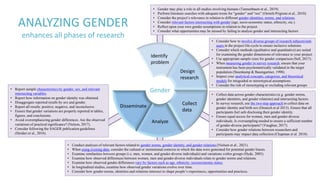This document discusses implementing a gender perspective in research. It begins by defining key terms like sex, gender, and gender dimension. It explains that a gender perspective aims to take into account differences between men and women in all aspects of research. This includes the formulation of research questions and methodologies. The document lists three main reasons to include a gender perspective: to produce higher quality research, limit unconscious bias, and comply with regulatory mandates. It then discusses the concept of "gendered innovations" and provides checklists for analyzing sex and gender in various stages of the research process from problem identification to data dissemination. Finally, it lists some related case studies and readings on the topic.







